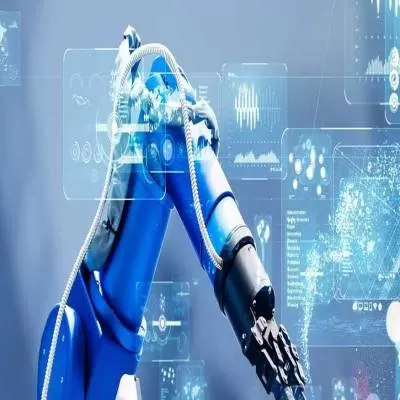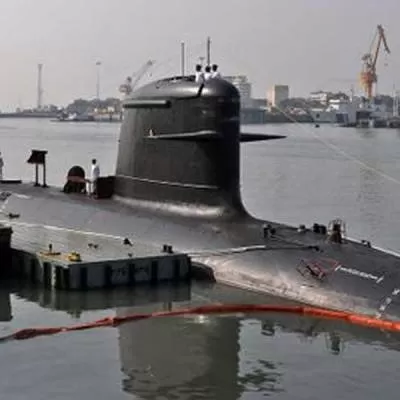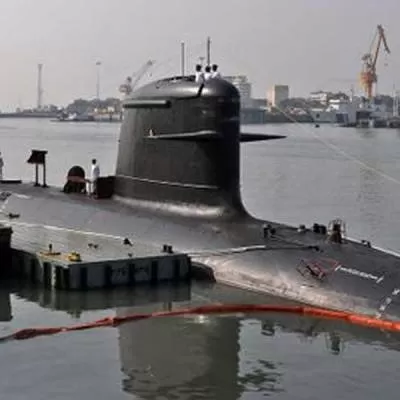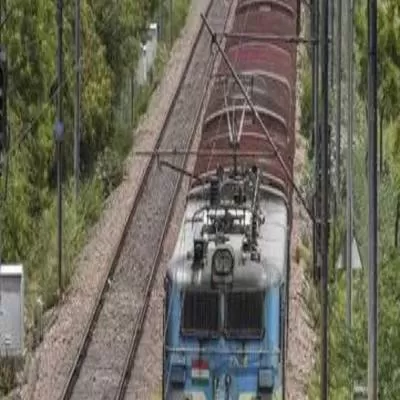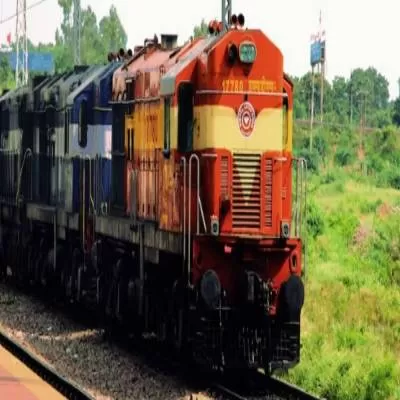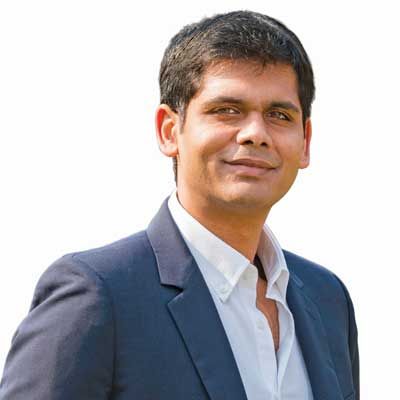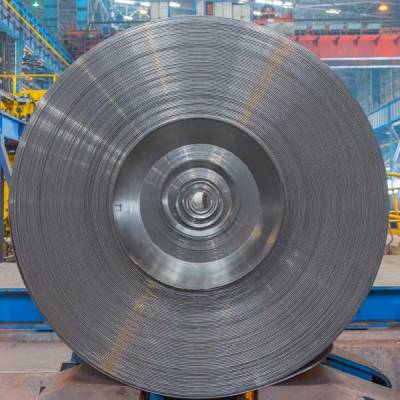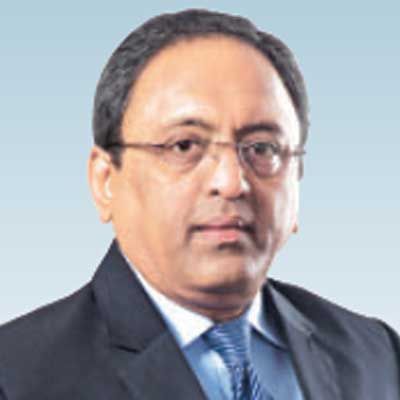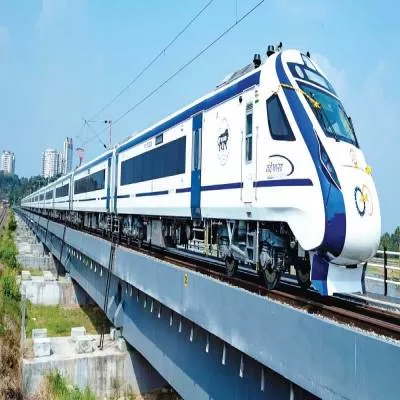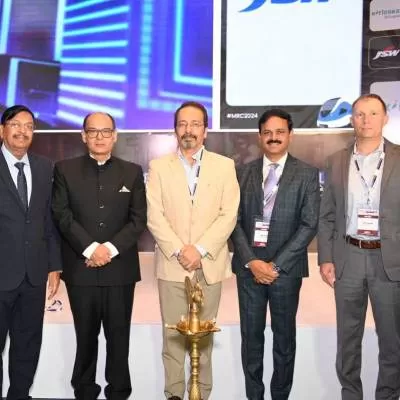- Home
- Infrastructure Transport
- RAILWAYS & METRO RAIL
- The biggest opportunity for India in Malaysia is in the railways

The biggest opportunity for India in Malaysia is in the railways
India and Malaysia´s economic partnership is a mutually beneficial one. While Malaysia is India's second most important trading partner among the ASEAN countries, India is the largest trading partner for Malaysia in South Asia. Both countries co-operate in myriad areas including infrastructure development, human resource development, science and technology, tourism, SMEs and finance. What´s more, the Malaysia-India Comprehensive Economic Cooperation Agreement (MICECA), established in 2010, has led to a wave of new projects undertaken by both countries. Eldeen Husaini Mohd Hashim, Consul General, Consulate General of Malaysia, was posted to Mumbai in July 2014. ¨When I researched the city of Mumbai on YouTube, all I gauged was traffic jams - videos focused on a crowded city that never sleeps, festivals and Bollywood,¨ he tells us. ¨Not a single video on buildings and infrastructure.¨ He emphasises that Mumbai has beautiful high-rise buildings and he was taken by surprise to know that the architecture of some buildings came from the locals. ¨India has a lot of builders and they are all millionaires,¨ he adds. ¨They take inspiration from concepts applied across the world and try to blend Indian culture into it. So to me, India has its locality in its architecture.¨ Charged and ready to strengthen bilateral ties, Hashim elaborates upon the opportunities and expertise India and Malaysia can offer each other in conversation with SHRIYAL SETHUMADHAVAN.
What emphasis does Malaysia place on India as a trade partner and vice versa?
India has always been our biggest partner not only in trade, but horticulture, education and much more. The relationship dates back to 200 BC. In fact, Malaysia has 17 per cent of its community from India. We are not strangers to each other and so in terms of trade, we really lay emphasis on India. World over, for Malaysia, India is the 10th trading partner and in terms of exports, the 12th largest trading partner. Further, in 2010, the Malaysian prime minister came to India and signed the MICECA agreement with then Prime Minister Manmohan Singh. After this, projects and contracts have been coming in; we are sending more MoUs to other countries and people are exchanging visits.
What is the nature of this economic agreement?
One big obstacle in India is bureaucracy. The entire process of documentation, getting licenses and seeking permissions is tedious for a businessman coming from Malaysia. Thus, we have developed a special agreement between Indian and Malaysian businessmen where deals can be done without such hassles. Its effectiveness is evident: in 2003, the number of projects was only 16; after signing the agreement, we have 62 projects today. So, from about US$ 300 million worth of projects, we now have projects amounting to US$ 721 million in India.
Has there been any change with the Narendra Modi Government coming to power?
When I came to India, the BJP Government had just come to power; this was a change the people wanted. Today, Prime Minister Modi has a lot of slogans: ´Make in India´, ´Clean India´, etc. Among Southeast Asian countries, there is a term known as ´look East´ policy. However, Prime Minster Modi changed this, saying it is no longer for us to look at it; now we have to ´act´ on it. So now ´Look East´ policy is going to be ´Act East´ policy. Such slogans really touch the heart of the leaders in our part of the continent. He is no longer looking to China; he wants to be more than China. And this is what also gave birth to the ´Make in India´ initiative. So India´s new prime minister is aggressive and even educates his ministers; for instance, Maharashtra´s chief minister has initiated ´Mumbai Next´. Now, going beyond slogans, we need action. Foreign investors have difficulties in coming to India because of the hassles they have to go through.
Where does the real challenge lie?
Each state has its own rules. Hence, there are a lot of additions and subtractions to the same documentation depending on every city. So it is not a friendly environment for investors. In fact, under the initiative of ´Mumbai Next´, we approached the chief minister and were told they will try to make this as lenient as possible. This, by itself, is a comforting statement. What we are yet to see is action, although there is movement in that direction.
How is the current FDI inflow between India and Malaysia?
Malaysia and India complement each other. The arrangement between both countries is like a barter system that works well. In India, till 2011, we only focused on the southern part. We had hospitals, education, schools, restaurants, railways, and all of that. But now we are moving forward towards central India. When the prime minister said, let´s ´Make in India´ and opened up the window, we already start moving in. So, in the case of FDI, India and Malaysia have a balanced approach.
Also, are Malaysian companies setting up their businesses in India or signing JVs and partnerships?
It works both ways. However, we believe signing a JV with an Indian company will secure the position of any Malaysian company. According to our research, going alone to India does not work; one must come in a pack. That works because when you go under one umbrella the chances of getting a good deal are brighter.
What expertise in the construction and infrastructure space does India lend to Malaysia?
In building construction, while the railway was a big boom in Malaysia, we learnt a lot from India. And India is now tendering for the connectivity highway from the south to north; we are trying to get Indian companies to work on the project. At present in Malaysia, there are 23,000 Indian workers doing projects for Indian buildings. India should emphasise on infrastructure in Malaysia. Around the 2002 year, the prime minister wanted to do a smart city in Malaysia. A special think tank from India came to Malaysia and helped us build this smart city, called Cyber City. India has experience in IT and we need more of it.
How do you see Malaysia contributing to India´s ´Make in India´ initiative?
We have several initiatives, one of which is R&D in India. So, creating a centre will create more jobs and creating knowledge renders more power and economic gain in terms of knowledge to Indians. We want to try to engage with the Indian authority here - we come to India, give you the raw material, teach you how to convert it into a product and then you can sell it back to us. This is where we try to complement ´Make in India´.
Are there any upcoming projects in Malaysia that present an opportunity for India?
The biggest upcoming project in Malaysia is the railways. Apart from this, while there are about 110 big Indian companies in Malaysia, we have around 199 small upcoming projects in the country.
Give us your views on feedback@ConstructionWorld.in
- Eldeen Husaini Mohd Hashim, Consul General, Consulate General of Malaysia India and Malaysia´s economic partnership is a mutually beneficial one. While Malaysia is India's second most important trading partner among the ASEAN countries, India is the largest trading partner for Malaysia in South Asia. Both countries co-operate in myriad areas including infrastructure development, human resource development, science and technology, tourism, SMEs and finance. What´s more, the Malaysia-India Comprehensive Economic Cooperation Agreement (MICECA), established in 2010, has led to a wave of new projects undertaken by both countries. Eldeen Husaini Mohd Hashim, Consul General, Consulate General of Malaysia, was posted to Mumbai in July 2014. ¨When I researched the city of Mumbai on YouTube, all I gauged was traffic jams - videos focused on a crowded city that never sleeps, festivals and Bollywood,¨ he tells us. ¨Not a single video on buildings and infrastructure.¨ He emphasises that Mumbai has beautiful high-rise buildings and he was taken by surprise to know that the architecture of some buildings came from the locals. ¨India has a lot of builders and they are all millionaires,¨ he adds. ¨They take inspiration from concepts applied across the world and try to blend Indian culture into it. So to me, India has its locality in its architecture.¨ Charged and ready to strengthen bilateral ties, Hashim elaborates upon the opportunities and expertise India and Malaysia can offer each other in conversation with SHRIYAL SETHUMADHAVAN. What emphasis does Malaysia place on India as a trade partner and vice versa? India has always been our biggest partner not only in trade, but horticulture, education and much more. The relationship dates back to 200 BC. In fact, Malaysia has 17 per cent of its community from India. We are not strangers to each other and so in terms of trade, we really lay emphasis on India. World over, for Malaysia, India is the 10th trading partner and in terms of exports, the 12th largest trading partner. Further, in 2010, the Malaysian prime minister came to India and signed the MICECA agreement with then Prime Minister Manmohan Singh. After this, projects and contracts have been coming in; we are sending more MoUs to other countries and people are exchanging visits. What is the nature of this economic agreement? One big obstacle in India is bureaucracy. The entire process of documentation, getting licenses and seeking permissions is tedious for a businessman coming from Malaysia. Thus, we have developed a special agreement between Indian and Malaysian businessmen where deals can be done without such hassles. Its effectiveness is evident: in 2003, the number of projects was only 16; after signing the agreement, we have 62 projects today. So, from about US$ 300 million worth of projects, we now have projects amounting to US$ 721 million in India. Has there been any change with the Narendra Modi Government coming to power? When I came to India, the BJP Government had just come to power; this was a change the people wanted. Today, Prime Minister Modi has a lot of slogans: ´Make in India´, ´Clean India´, etc. Among Southeast Asian countries, there is a term known as ´look East´ policy. However, Prime Minster Modi changed this, saying it is no longer for us to look at it; now we have to ´act´ on it. So now ´Look East´ policy is going to be ´Act East´ policy. Such slogans really touch the heart of the leaders in our part of the continent. He is no longer looking to China; he wants to be more than China. And this is what also gave birth to the ´Make in India´ initiative. So India´s new prime minister is aggressive and even educates his ministers; for instance, Maharashtra´s chief minister has initiated ´Mumbai Next´. Now, going beyond slogans, we need action. Foreign investors have difficulties in coming to India because of the hassles they have to go through. Where does the real challenge lie? Each state has its own rules. Hence, there are a lot of additions and subtractions to the same documentation depending on every city. So it is not a friendly environment for investors. In fact, under the initiative of ´Mumbai Next´, we approached the chief minister and were told they will try to make this as lenient as possible. This, by itself, is a comforting statement. What we are yet to see is action, although there is movement in that direction. How is the current FDI inflow between India and Malaysia? Malaysia and India complement each other. The arrangement between both countries is like a barter system that works well. In India, till 2011, we only focused on the southern part. We had hospitals, education, schools, restaurants, railways, and all of that. But now we are moving forward towards central India. When the prime minister said, let´s ´Make in India´ and opened up the window, we already start moving in. So, in the case of FDI, India and Malaysia have a balanced approach. Also, are Malaysian companies setting up their businesses in India or signing JVs and partnerships? It works both ways. However, we believe signing a JV with an Indian company will secure the position of any Malaysian company. According to our research, going alone to India does not work; one must come in a pack. That works because when you go under one umbrella the chances of getting a good deal are brighter. What expertise in the construction and infrastructure space does India lend to Malaysia? In building construction, while the railway was a big boom in Malaysia, we learnt a lot from India. And India is now tendering for the connectivity highway from the south to north; we are trying to get Indian companies to work on the project. At present in Malaysia, there are 23,000 Indian workers doing projects for Indian buildings. India should emphasise on infrastructure in Malaysia. Around the 2002 year, the prime minister wanted to do a smart city in Malaysia. A special think tank from India came to Malaysia and helped us build this smart city, called Cyber City. India has experience in IT and we need more of it. How do you see Malaysia contributing to India´s ´Make in India´ initiative? We have several initiatives, one of which is R&D in India. So, creating a centre will create more jobs and creating knowledge renders more power and economic gain in terms of knowledge to Indians. We want to try to engage with the Indian authority here - we come to India, give you the raw material, teach you how to convert it into a product and then you can sell it back to us. This is where we try to complement ´Make in India´. Are there any upcoming projects in Malaysia that present an opportunity for India? The biggest upcoming project in Malaysia is the railways. Apart from this, while there are about 110 big Indian companies in Malaysia, we have around 199 small upcoming projects in the country. Give us your views on feedback@ConstructionWorld.in


